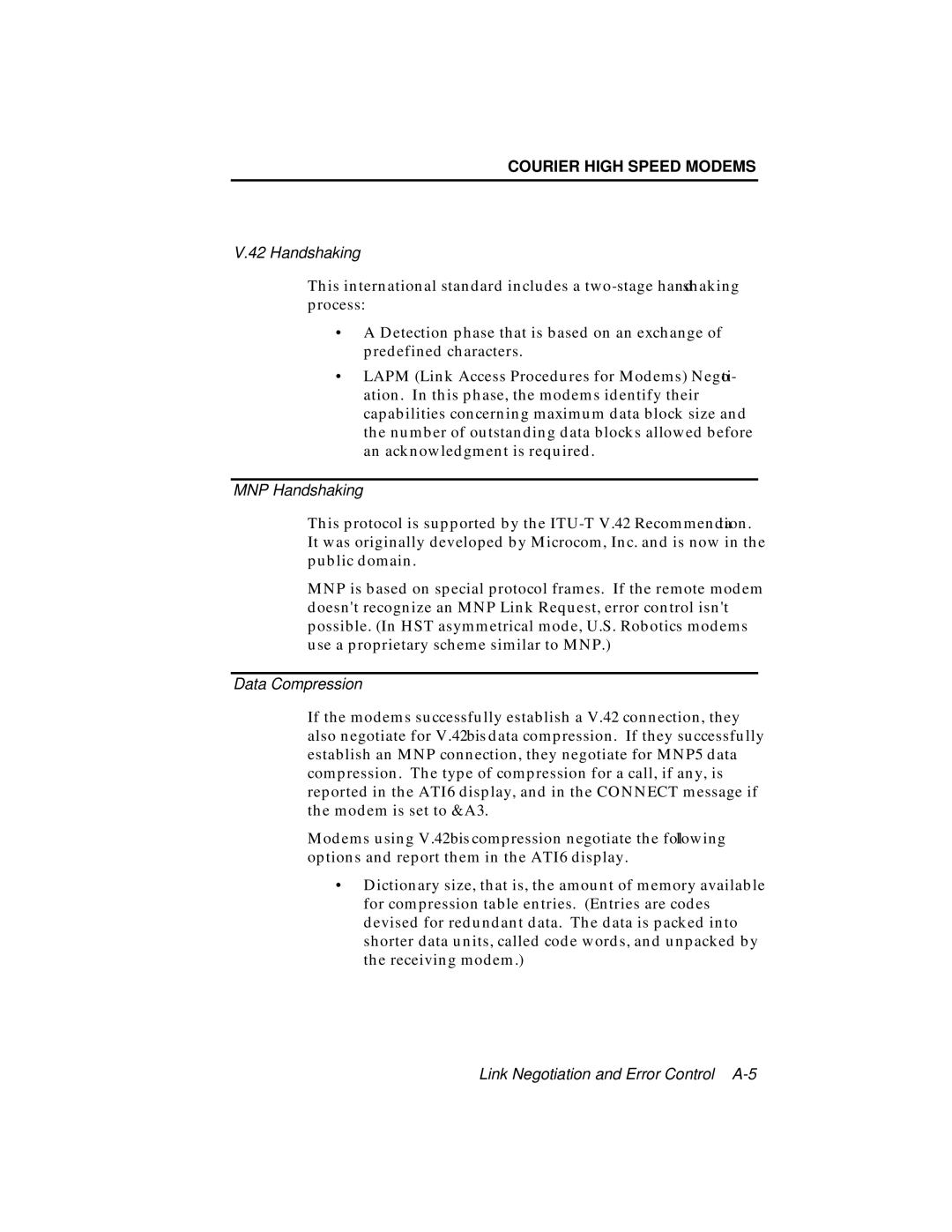
COURIER HIGH SPEED MODEMS
V.42 Handshaking
This international standard includes a
•A Detection phase that is based on an exchange of predefined characters.
•LAPM (Link Access Procedures for Modems) Negoti- ation. In this phase, the modems identify their capabilities concerning maximum data block size and the number of outstanding data blocks allowed before an acknowledgment is required.
MNP Handshaking
This protocol is supported by the
MNP is based on special protocol frames. If the remote modem doesn't recognize an MNP Link Request, error control isn't possible. (In HST asymmetrical mode, U.S. Robotics modems use a proprietary scheme similar to MNP.)
Data Compression
If the modems successfully establish a V.42 connection, they also negotiate for V.42 bis data compression. If they successfully establish an MNP connection, they negotiate for MNP5 data compression. The type of compression for a call, if any, is reported in the ATI6 display, and in the CONNECT message if the modem is set to &A3.
Modems using V.42 bis compression negotiate the following options and report them in the ATI6 display.
•Dictionary size, that is, the amount of memory available for compression table entries. (Entries are codes devised for redundant data. The data is packed into shorter data units, called code words, and unpacked by the receiving modem.)
Link Negotiation and Error Control
